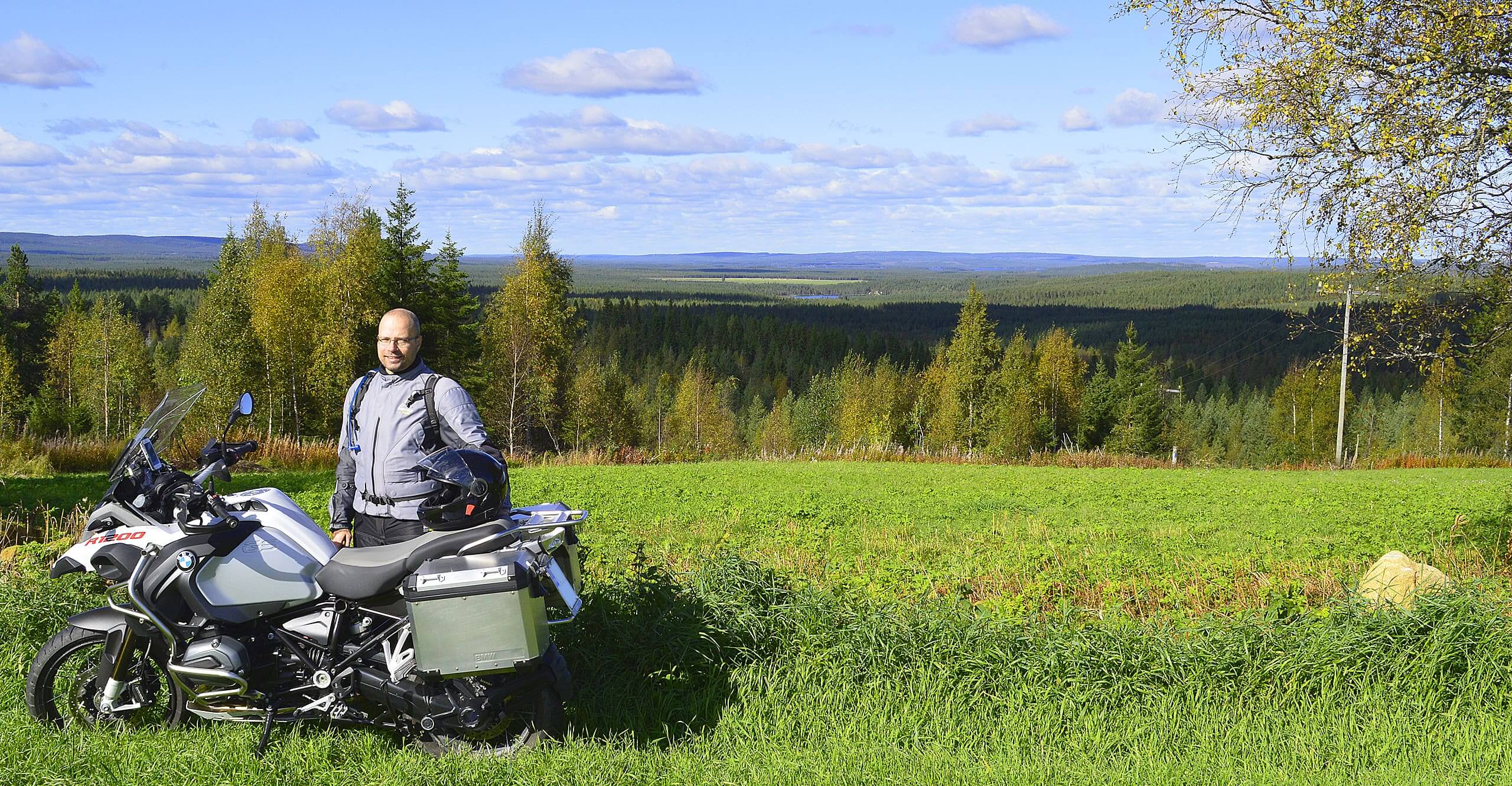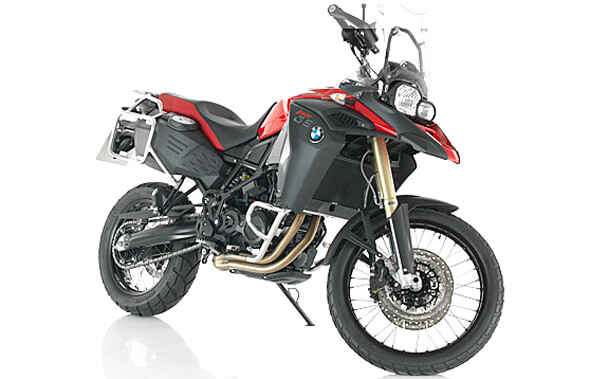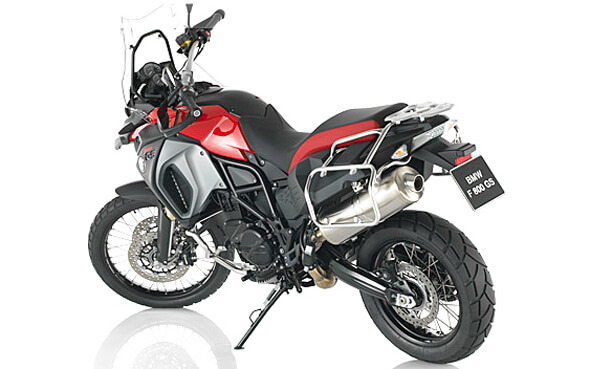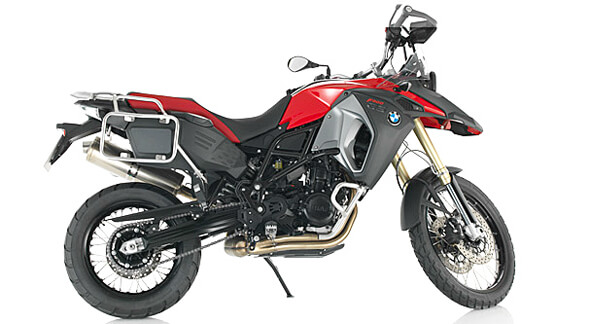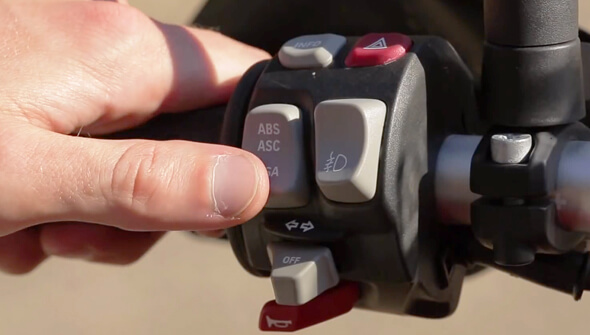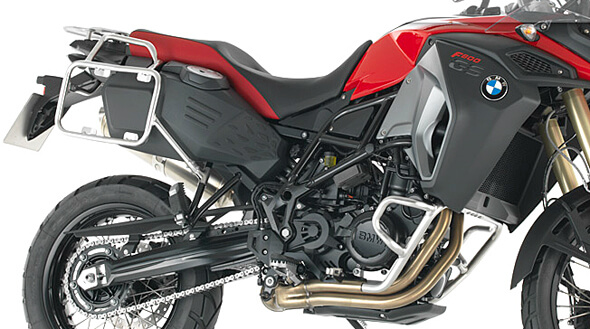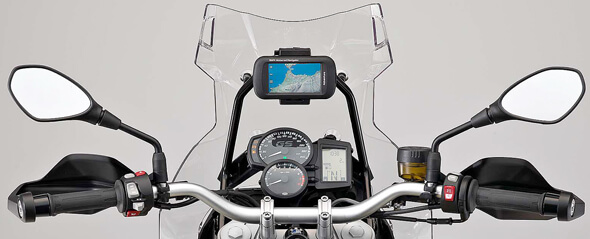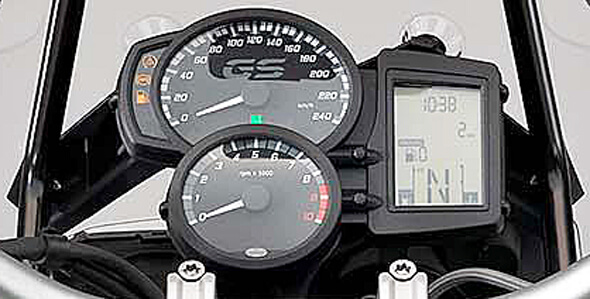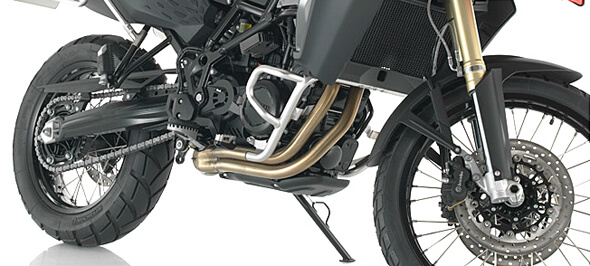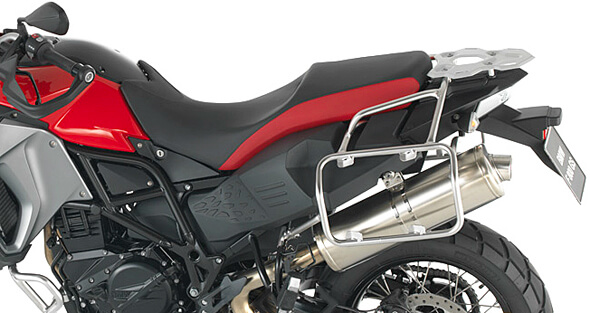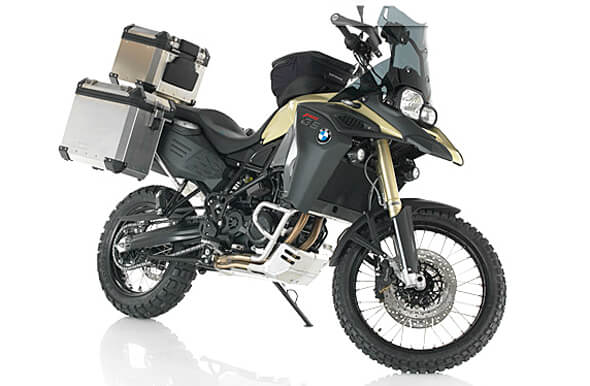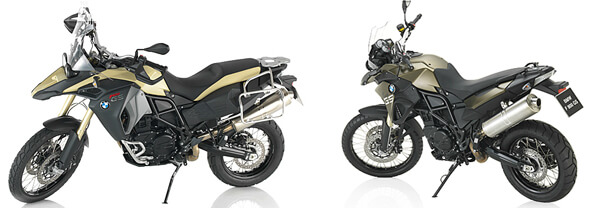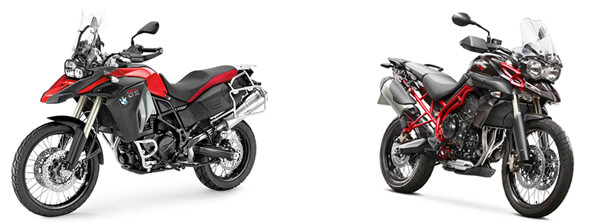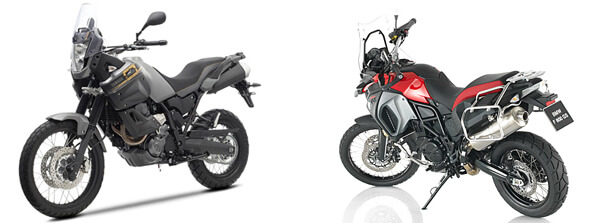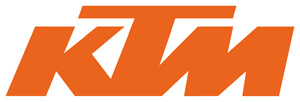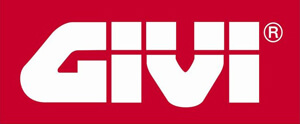BMW F800 GS Adventure 2014 Touring Motorcycle
A BMW F800 GS Adventure 2014 touring motorcycle is a factory upgrade from the basic dual sport BMW F800 GS 2014 with few differences and add ons. They are basically the same bike, but the 800GSA has stronger touring orientation due to the extended fuel range, comfort seat and better wind cover. The 800GSA is very competitive alternative for demanding adventure touring without the passenger and in diverse offroad conditions. The big 21inch front wheel, excellent ergonomics, relative low overall weight and exceptionally agile handling features make the package strong. The steering is calm tanks to the big front wheel and a wide handlebar. Large offroad pegs provide better grip and proper support both in standing and sitting posture. A tall and wider touring windscreen provides sufficient wind coverage, but the hand guards are modest for chillier conditions. The BMW F800 GS Adventure 2014 is capable of taking longer stretches, thanks to the extensive fuel range and the economical twin.
I think that the BMW F800 GS Adventure 2014 offers one of the best combination of really relevant allroad touring features without being quite so heavy for the most challenging routes. For sure it`s also a some kind of compromise like every single bike. It`s not designed for extreme offroad riding which requires far less weight and much more agility. It`s neither a wild riding machine on tarmac in everyday biking. More like a sensible and fluent touring bike. As soon as the F800GSA rider leaves the urban safety and heads on gravel and dirt roads in the backcountry for a coupe of days at least, the bike shows how dynamic and agile it really is. Without a doubt the BMW F800 GS Adventure 2014 is the leading reference model in the medium size DS touring segment.
BMW F800 GS Adventure 2014 Features
The BMW F800 GS Adventure 2014 water cooled twin delivers enough performance and useful torque for solo adventure touring with a reasonable amount of payload. The power is practical, but hardly very sporty. When riding on two closer to the maximum load, it`s not much, but the power delivery is linear and controllable. Unfortunately the 800GSA is not ride by wire throttled which means that there is no cruise control. As long as the riding is active, no-one would miss the cruise control. Still most of us ride also on the pavement and would like to clear long stretches with a minimum fatigue. Therefore it should be a standard feature for any touring motorcycle.
The BMW F800 GS Adventure 2014 can be equipped with a stability control system called the ASC. The ASC consists of a traction control system, 2 riding modes and an integration with the ABS. The ASC brings special offroad riding safety features both from the acceleration and the deceleration point of view. Both the traction control and the ABS are monitoring the wheel spin and rotation differences between the front and the rear, but for opposite dynamics. The other side of the coin is that the 800GSA rider has to change the settings according to the surface in question in order to avoid system failures and surprises. After a while it may become a routine or an annoying must. Although they can be turned OFF separately, but since the systems are automatically activated after every single engine start, the relief is short. ASC settings can be changed separately or simultaneously by changing the riding mode. Since the ASC and the ABS are both sensitive for the tyre pressure and the tyre type, I prefer to exclude them from the scenario. The BMW F800 GS Adventure 2014 twin engine is not very sporty, especially with a touring load and the throttle management is hardly difficult to master.
Both the BMW F800 GS Adventure 2014 ABS and the traction control have 3 modes. A ROAD mode is optimized for pavement surfaces and an ENDURO mode for offroad conditions. The Enduro mode should be always used in offroad conditions or system failures would occur. It simply allows more sliding with a lower intervention level. When the spin difference exceeds certain limits, the ASC adapts the throttle management accordingly and if the difference becomes prolonged e.g. due to a wheelie or burnout, the traction control shuts down automatically. Both the traction control and the ABS can be also switched OFF, but the systems are automatically back ON after the engine start. Changes can be done also on the move by pressing the ABS/ASC control button as long as the desired mode appears on the display, but especially in offroad conditions I would only change the riding modes quickly and stop for further adjustments.
The BMW F800 GS Adventure 2014 could be also equipped with an electronic suspension system – ESA with 3 settings, NORMAL, SPORT and COMFORT damping mode. The ESA operates only with the rear end and there is no electronic front suspension management. The LCD display shows the current setting when the ESA control button is briefly pressed. Changes can be done quickly and even on the move by keeping the button pressed and waiting for the right setup to appear on the display. Naturally the standard 800GSA suspension system allows to adjust the spring preload at the rear and the rebound like almost any other competitor. Once the setup is found, there is usually no need to play with the settings very often, but if the payload scenarios changes a lot and frequently, the ESA would make the adaptation more simple. The key BMW F800 GS Adventure 2014 features are:
- Seat height 890 mm.
- Cross spoked rims
- Tyres 90/90 – 21 and rear 150/70 – 17
- Engine type parallel twin cylinder
- Max performance 85HP and 83Nm. or 61.2ft-lb.
- Alternator 400W
- 12V cockpit power outlet
- Electronic immobiliser system EWS
- Chain driven
- ABS (off switchable)
- Weight fueled 229kgs or 504.9lbs.
- Payload 225kgs or 496lbs.
- Fuel tank 24L, 6.3USgal., 5.3UKgal. (min. 95RON – 89AKI)
The BMW F800 GS Adventure 2014 has a modest alternator which requires sensible power consumption. Perhaps the weight competition has forced to this decision, but the travel electronics and the touring equipment such as grip heaters and fog lights need more juice. The 800GSA rider has to take every measure to save some of the capacity and a pair of LED lighting would be one of them.
BMW F800GS Adventure 2014 Fuel Tank
The BMW F800 GS Adventure 2014 rear end fuel tank offers a practical range which is important for remote exploring. Still the range is not one of the longest and hardly well over 500km or 310 miles with a touring payload. Therefore a pair of reserve canisters would be nice for the most remote backcountry destinations, where the fuel stations are rare. I hate to play with the range and rather take reserves onboard. The 800GSA becomes more thirsty with a heavy load and when taking the bike often to the limits. The standard BMW F800 GS Adventure 2014 requires regular fuel, but the ECU can be upgraded for a low octane fuel too. For such an adventure touring bike, I think it should be a standard feature. Since this is simply a fuel mapping upgrade, it should come on top of the deal.
The BMW F800 GS Adventure 2014 fuel tank is not perfect. When having all the fuel at the back, the weight distribution is less ideal. The payload is anyhow mostly at the back and it would be better to have some of it in the front and closer to the center of the gravity. The fuel in the front counter balances the payload. Reserve canisters limit the amount of payload at the back and put more pressure on the rear wheel making the front wheel lighter. With the maximum payload, the 800GSA is quite out of balance than otherwise. This is one more reason to use the 800GSA mainly for solo riding. On the other hand, the rear fuel tank allows to keep the tank bag in place, even when fueling. Another disadvantage is the odd shape which makes measuring the fuel level more difficult. Therefore the fuel gauge shows the amount of fuel first time when the level drops below a half a tank. When the fuel level drops down to the reserve, the shape prevents again measurements and the optional reserve counter becomes practical. The 2,7L reserve is also rather small and requires anticipation or backup.
As standard the BMW F800 GS Adventure 2014 has a factory installed pannier rack. It`s useful several ways. It protects the fuel tank in case of a fall. Then the rack would keep a bigger tail or saddle bag away from the silencer and the bag could be easily strapped to the bike. On the other hand, the BMW rack forces to buy the dealer`s panniers or leave it useless in the stock. I would rather go without it and get the equipment elsewhere, unless the dealer is willing to cut a better deal.
BMW F800 GS Adventure 2014 Instrumentation
The BMW F800 GS Adventure 2014 standard instrumentation is with today`s standards quite traditional and modest for touring. From the fuel monitoring point of view, it requires at least a proper GPS navigator. Note that the fuel monitoring is not the strongest feature of the 800GSA. In addition to an analogue speed and tachometer, there is a very basic onboard computer with a LCD display. I prefer to have as much onboard info as possible and recommend to upgrade it in the final negotiation. Settings are made with 2 buttons in the instrumentation panel and on the handlebar using simple menus loops. The basic BMW F800 GS Adventure 2014 onboard computer and the LCD display features are:
- Time
- Overheating indicator
- Service due indicator
- Odometer
- Trip 1 & 2
- Coolant temperature level
- Fuel level (after 1/2 tank)
- Failure & warning messages
The BMW F800 GS Adventure 2014 basic onboard computer can be upgraded with few additional features. A fuel reserve counter is the only important feature which is excluded from the basic configuration. In this case, the setup is strange due to the fact that the 800GSA fuel tank is imperfect. Nevertheless, 2 consumption readings would be useful indicators when estimating the range for an exceptional route and a substantial payload. A gear indicator is sometimes useful when approaching the red lights and not braking with the engine efficiently, nor counting the gears in mind in order to accelerate right away if the lights suddenly change. A temperature reading is practical when estimating the proper amount of mid layers in advance before the ride becomes uncomfortable. The additional BMW F800 GS Adventure 2014 onboard computer features are:
- Gear in use
- Air temperature
- ICE warning
- Average speed
- Speed warning
- Average fuel consumption
- Current fuel consumption
- Fuel reserve counter
- Overthrottling indicator
- Grip heater level (optional)
- Stopwatch & lap timer
BMW F800 GS Adventure 2014 Equipment Accessory
The standard BMW F800GS Adventure 2014 is hardly ready for an adventure. There are few basic accessories that would be good to add for serious touring in offroad conditions. The center stand is useful when regularly servicing the chain drive and also when loading the bike. A chain oiler would be helpful too since the chain service intervals are shorter in offroad conditions. A side stand foot extension would be good too due to the overall weight and typically softer ground conditions. A taller crash bar or crash bar extension would protect the radiator which is fairly wide and easily damaged. The headlight requires also more protection in offroad conditions and quick removable guards allow also easy cleaning. A tall BMW F800GS Adventure 2014 windshield has a practical support bar which allows to install a GPS navigator at the best height.
The standard BMW F800GS Adventure 2014 skid plate is ridiculous and gives no real protection in offroad. I would recommend to install a much larger engine skid plate and equipment producers offer thicker and taller skid plates providing better coverage for the oil filter and the oil cooler in front of the engine. A mud guard extension would be useful too. I would also recommend to install a tool box in front of the skid plate which is the best location from the counter balancing and agility point of view. Note that the exhaust pipe is snaking between the center stand and not all skid plates offer enough protection for it. Pay also attention to the fastening points since they need to divide the impacts forces. A pair of auxiliary LED lights would be a practical safety factor and illuminate the route in the dark, but also reserve power for travel electronics. Note that the BMW F800GS Adventure 2014 alternator produces moderate 400W which is not a lot for such an adventure touring machine. Still I would install a pair of grip heaters and use thinner gloves as often as possible. Larger hand guards would also support the intention.
The BMW F800GS Adventure 2014 seat is quite comfortable and relative high. The factory offers also a 30 mm. lower (33.9in.) seat, but that`s about all for the moment and the 800GSA ergonomics are not versatile enough for shorter riders. Note that the basic model BMW F800 GS 2014 has much more seat options and remains a competitive alternative. The stock 800GSA has side pannier rack installed which puts pressure to get the panniers from the dealer too. The up side is that those pannier locks can be integrated with the ignition key and the aluminium panniers are very good from the loading & luggage strapping point of view.
BMW F800 GS Adventure 2014 Comparison
Compared to the basic BMW F800 GS 2014, the brother model BMW F800GS Adventure 2014 offers 8L (2.1USgal., 1.8UKgal.) more fuel capacity, side pannier rack, reinforced rear subframe to support the maximum 443kgs (977lbs.) payload, a tall touring windshield, a comfort seat, wide offroad foot pegs, adjustable foot brake lever and engine crash bars, but it`s also around 15kgs (33.1lbs.) heavier and offers 4kgs (8.8lbs.) less payload capacity. The 5,6kg (12.4lbs.) difference in weight comes from the bigger fuel tank and the rest from the crash bars plus fairing differences. Basically the GSA is pre-equipped for adventurous touring and the 800GS is a simplified version which leaves more options open for personal preferences and tuning. Nevertheless the differences in fuel tank and with the rear subframes are more real and have an effect on final compositions. Those who plan to take global tours and visit the most remote destinations, should probably go straight with the 800GSA, but if you are somewhere in the middle and hardly never exceeding the payload limits, the BMW F800 GS 2014 is still very competitive alternative. Especially if you enjoy tuning.
VS TRIUMPH Tiger 800XC 2014
Compared to the TRIUMPH Tiger 800XC 2014, the BMW F800 GS Adventure 2014 provides 4Nm. more useful torque and 5L (1.3USgal., 1.1UKgal.) more fuel capacity, but it`s also 14kgs (30.9lbs.) heavier, offers 4kgs (8.8lbs.) less payload capacity, 10HP less engine and 98W less alternator performance. Some of the weight difference comes from the 3,5kgs (7.7lbs.) larger fuel capacity, STD pannier rack and crash bars. Nevertheless the Tiger has an additional cylinder, larger exhaust and bigger alternator. The Tiger produces more power for the travel electronics which is a significant plus in touring. The Tiger also includes the low octane fuel settings unlike the 800GSA.
From the offroad handling point of view, the BMW F800 GS Adventure 2014 is more agile due to the rear end fuel tank, but it also means that it`s a little bit rear heavy with a full touring payload. On the other hand, the Tiger is top heavier due to the traditional fuel tank and a bigger triple engine which are actually counter balancing the payload. The Tiger has slightly better ergonomics due to the adjustable 2 piece seat and an adjustable handlebar. On the other hand, the Tiger has a short windshield which is very modest compared to the 800GSA wind cover, but there are OE touring screens to take care of that. The Tiger has slightly more comprehensive instrumentation with clearly better fuel monitoring features, thanks to the traditional fuel tank. The TRIUMPH Tiger 800XC 2014 is more sporty, capable of taking the passenger on board and a very competitive base to start building an allroad touring machine. The BMW F800 GS Adventure 2014 is more agile, offers one of the most extensive tuning potential, but also longer fuel range.
VS YAMAHA XT660Z Tenere ABS 2014
Compared to the single cylinder YAMAHA XT660Z Tenere ABS 2014, the BMW F800GS Adventure 2014 offers 37HP/25Nm. more engine performance, 1L (0.26USgal., 0.22UKgal.) more fuel and 35kgs (77.2lbs.) more payload capacity, but it`s also 21kgs (46.3lbs.) heavier. Some of the weight difference come from the additional accessory such as the pannier rack, crash bars and the hand guards, but mostly from the differences in the engine, gear box and the exhaust. Therefore one of the biggest differences in nature come from the performance and the single cylinder engine gives no match for the BMW twin. They both have cross spoked rims, big front wheels, tall windshields, simplified standard setup and single piece seats without adjustment.
The BMW F800GS Adventure 2014 ergonomics are better and more versatile, especially for taller riders. The Tenere is more compact and offers limited geometric tuning possibilities. The Tenere has a traditional fuel tank in the front which is better from the fuel measurement and monitoring point of view. The Tenere fuel gauge is able to measure the total capacity and offers also a reserve counter feature as standard. The 800GSA rear tank is not top heavy like the Tenere with a full tank, but on the other hand the Tenere offers more counter balance for the rear end payload. The YAMAHA XT660Z Tenere ABS 2014 is clearly a more traditional choice for those who appreciate simplicity and are not looking for the highest performance, nor the latest MC technology. The BMW F800GS Adventure 2014 is more sporty, technically advanced and versatile.
Share Your Passion On
